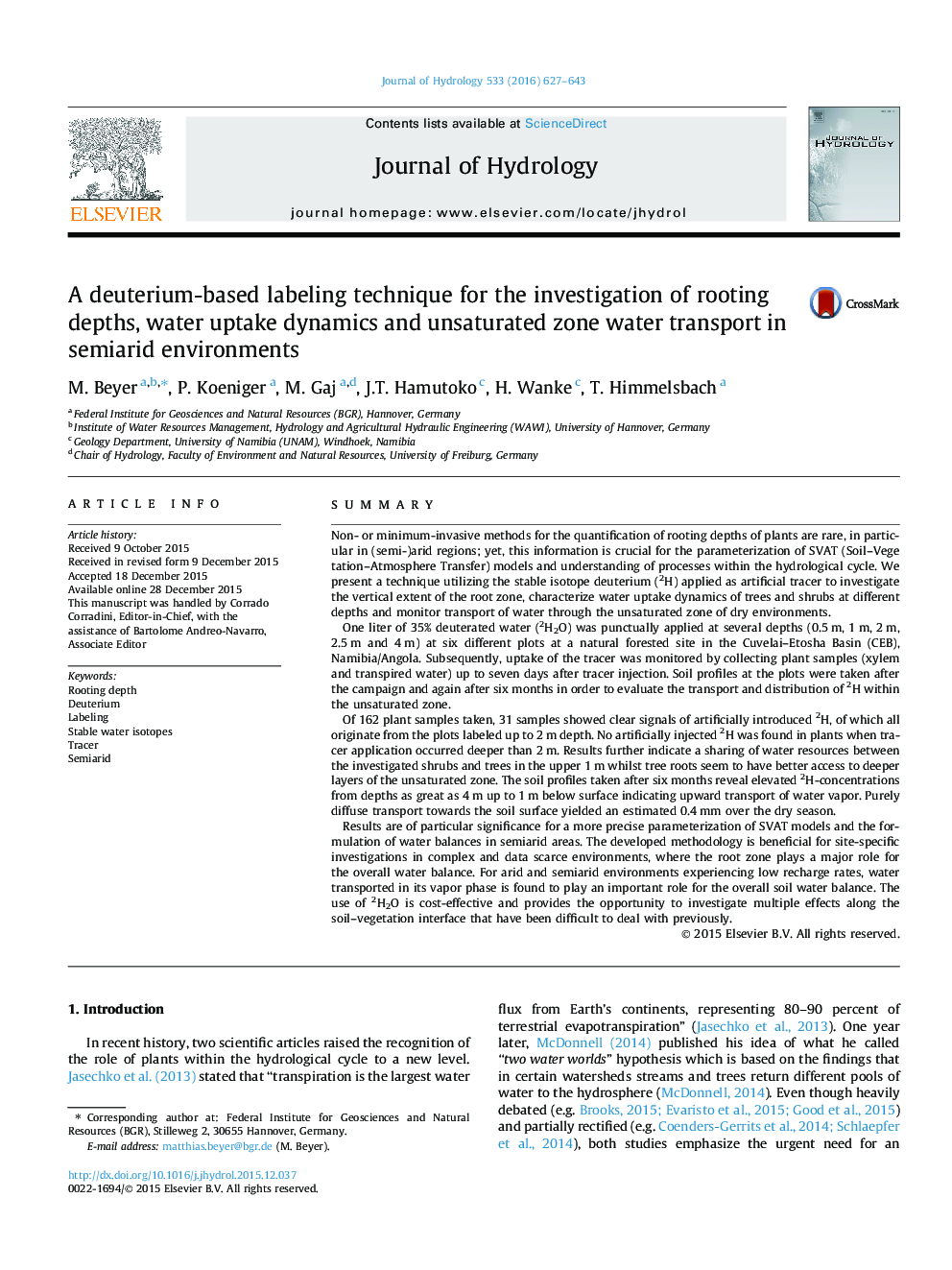| کد مقاله | کد نشریه | سال انتشار | مقاله انگلیسی | نسخه تمام متن |
|---|---|---|---|---|
| 6410568 | 1629919 | 2016 | 17 صفحه PDF | دانلود رایگان |
- We present a minimum-invasive method for examining rooting depths.
- The method allows the simultaneous study of plant water uptake and vapor transport.
- Diffusive transport of water vapor over the dry season was quantified.
- Deuterium is valuable for studies along the soil-vegetation-atmosphere interface.
- The developed method is cost-effective and straightforward.
SummaryNon- or minimum-invasive methods for the quantification of rooting depths of plants are rare, in particular in (semi-)arid regions; yet, this information is crucial for the parameterization of SVAT (Soil-Vegetation-Atmosphere Transfer) models and understanding of processes within the hydrological cycle. We present a technique utilizing the stable isotope deuterium (2H) applied as artificial tracer to investigate the vertical extent of the root zone, characterize water uptake dynamics of trees and shrubs at different depths and monitor transport of water through the unsaturated zone of dry environments.One liter of 35% deuterated water (2H2O) was punctually applied at several depths (0.5Â m, 1Â m, 2Â m, 2.5Â m and 4Â m) at six different plots at a natural forested site in the Cuvelai-Etosha Basin (CEB), Namibia/Angola. Subsequently, uptake of the tracer was monitored by collecting plant samples (xylem and transpired water) up to seven days after tracer injection. Soil profiles at the plots were taken after the campaign and again after six months in order to evaluate the transport and distribution of 2H within the unsaturated zone.Of 162 plant samples taken, 31 samples showed clear signals of artificially introduced 2H, of which all originate from the plots labeled up to 2Â m depth. No artificially injected 2H was found in plants when tracer application occurred deeper than 2Â m. Results further indicate a sharing of water resources between the investigated shrubs and trees in the upper 1Â m whilst tree roots seem to have better access to deeper layers of the unsaturated zone. The soil profiles taken after six months reveal elevated 2H-concentrations from depths as great as 4Â m up to 1Â m below surface indicating upward transport of water vapor. Purely diffuse transport towards the soil surface yielded an estimated 0.4Â mm over the dry season.Results are of particular significance for a more precise parameterization of SVAT models and the formulation of water balances in semiarid areas. The developed methodology is beneficial for site-specific investigations in complex and data scarce environments, where the root zone plays a major role for the overall water balance. For arid and semiarid environments experiencing low recharge rates, water transported in its vapor phase is found to play an important role for the overall soil water balance. The use of 2H2O is cost-effective and provides the opportunity to investigate multiple effects along the soil-vegetation interface that have been difficult to deal with previously.
74
Journal: Journal of Hydrology - Volume 533, February 2016, Pages 627-643
